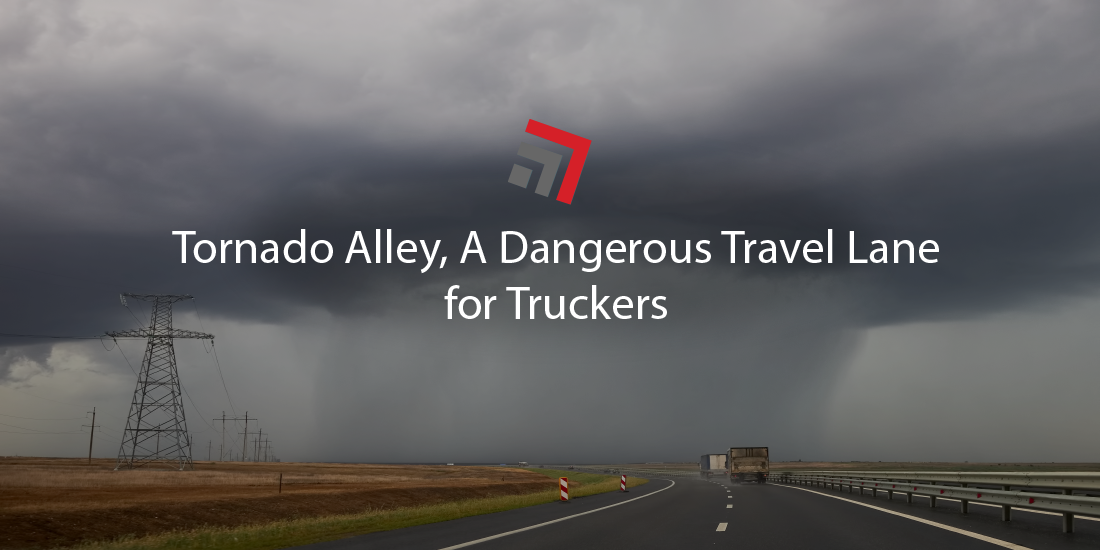Last December, a large weather system swept across the country. From the Sierra Nevada to New England, all parts of the U.S. were impacted by either blizzard conditions or tornadic thunderstorms.
As we make our way through May, the latter of these severe weather conditions is now the one to worry about.
Tornado season is now upon us. While these violent vortexes can appear in most regions of the country, the Great Plains is the most vulnerable. This is where the infamous Tornado Alley exists.
What’s Tornado Alley?
Tornado Alley is not scientific canon, but rather a colloquial reference to where tornadoes frequently occur.
Experts actually say “tornado alley” can be misleading. The U.S. tornado threat can shift from the Southeast in the cooler months of the year towards the southern and central Great Plains in May and June, and the upper Plains and Midwest during the summer.
While depictions can vary, most describe this alleyway as a corridor that begins in south central Texas and extends all the way up to southern Minnesota and the Dakotas. The width of it usually includes Kansas, Oklahoma, and Nebraska to the west and Mississippi, Alabama, and Florida to the southeast.
Tornado activity in these deep south states is sometimes referred to as Dixie Alley instead.
Whether it’s right to use tornado alley or not, there’s no denying these storms are a real threat during the spring and summer months.
Safety tips for Tornado Alley truckers
Tornadoes have a strong capacity for complete destruction. These storms are life-threatening for any poor souls who find them in the wrong place.
The most dangerous place to be when in the path of a tornado would be on the road hauling loads—such as truckers do.
Interstates 20, 35, 40, 70, and 80 are among the notable and well-trafficked lanes that run through Tornado Alley.
At any given moment, there’s hundreds of rigs traveling these highways and other roadways near them.
The following are safety tips for truckers if they ever get caught up in one of these storms:
Plan ahead
If this first tip is heeded effectively, there may not be need for the ones that follow. If the sky looks funny and sort of sinister, truckers should take note of that and check the weather conditions.
If they look like bad news, drivers can contact their fleets and plan accordingly.
If together it’s determined still okay to drive, drivers need to make sure to chart out any truck stops or operating centers in the event that the weather changes for the worse—with tornadoes it very well can.
Weather radios are a driver’s best friend in scenarios like this—they ought to ditch the Lynyrd Skynyrd CDs and keep the radio on for up-to-date advisories.
Find shelter
Getting indoors is priority number one. Structures will help shield drivers from any debris or winds. Be sure to stay away from windows and hunker down in a basement (if possible).
No shelter? Find a ditch
If seeking shelter is futile, remember: “Life’s a ditch.” Drivers need to find a ditch or another lowly elevated area and lay low. If possible, they should cover themselves with a blanket or coat.
However—to make this even more stressful—if the ditch has water in it, drivers shouldn’t just hop in. They should scan the immediate area and make sure there aren’t any power lines that could fall from above.
No ditch? Umm, stay in the truck
This is the last resort.
We can’t confirm the success rate of this one, but we’re positive it’s better than getting out the truck, streaking, and running out into a cornfield.
Should drivers be faced with this only option, they should pull over and park their rig. Next, they should keep their seat belt on and cover their head with a blanket or coat.
After that, they should say a quick prayer, get low as possible, and stay away from their windows.
Not all tornadoes can pick up 80,000-pound trucks, but all 80,000-pound trucks will be picked up by a tornado that’s powerful enough. May the odds be in truckers’ favor.
Final Thoughts
Lastly, there are a couple of things drivers should not do when up against a tornado.
First, they should never try to outrun or outdrive one of these storms. We put an emphasis on try since that’s all it will be—an unsuccessful effort to outrun Mother Nature. Tornadoes are erratic in their paths and there’s no way of accurately predicting their movements in the driver seat.
Secondly, while it’s technically a structure, drivers should not hide under an overpass or bridge. Instead of being a safe harbor to wait out a storm, these structures actually do the opposite. They form high-speed wind tunnels of death. Whatever speed a tornado clocks on ground can be amplified ten-fold when it strikes a bridge or overpass.
Basically, drivers should ask themselves, “How would they react to a tornado in the movies?” Whatever answer they think of, they definitely shouldn’t follow suit in real life.
Contact us if you have any questions regarding this topic or any others in domestic logistics. In addition, stay up to date with weekly headlines from both trucking and rail via our Road Map newsletter.
More blogs similar to this:



Recent Comments